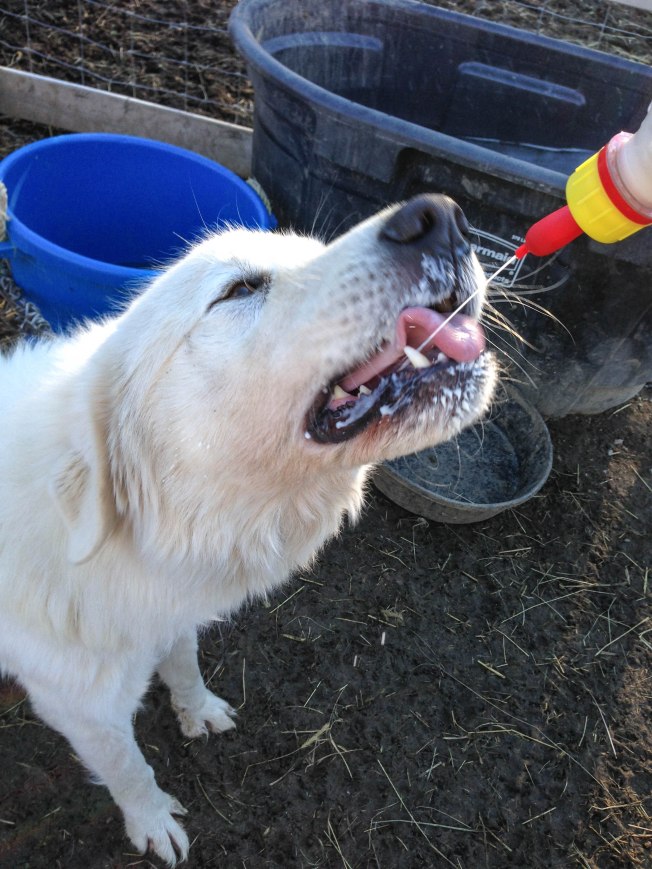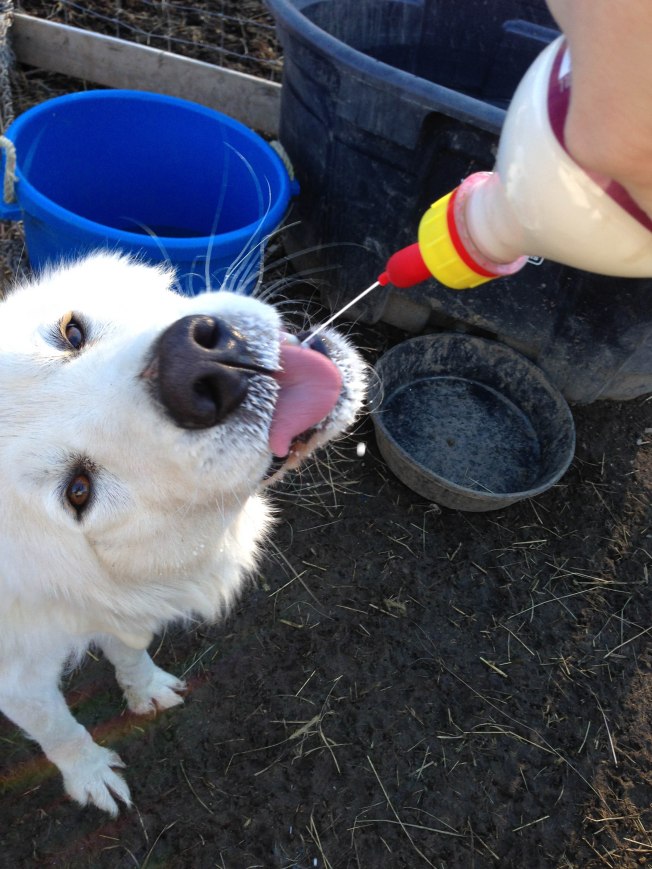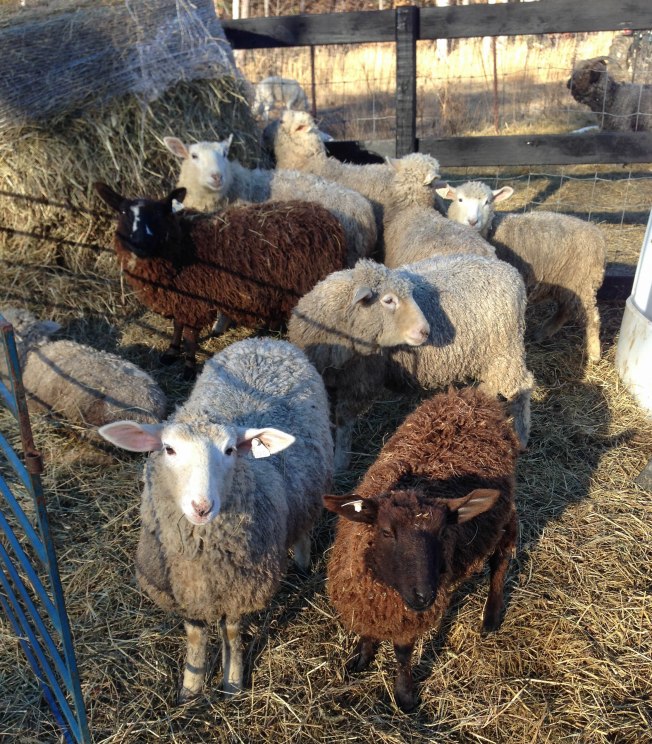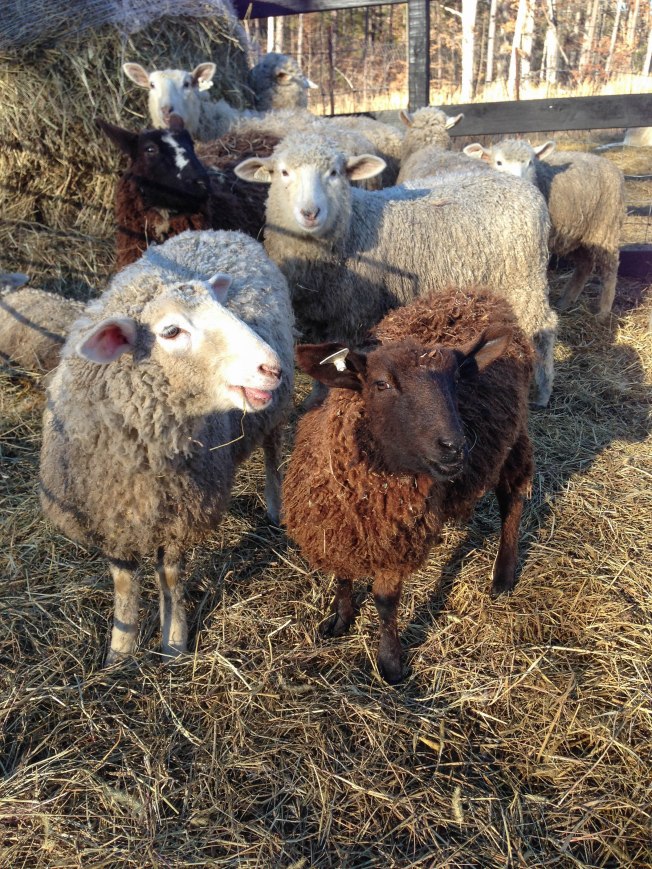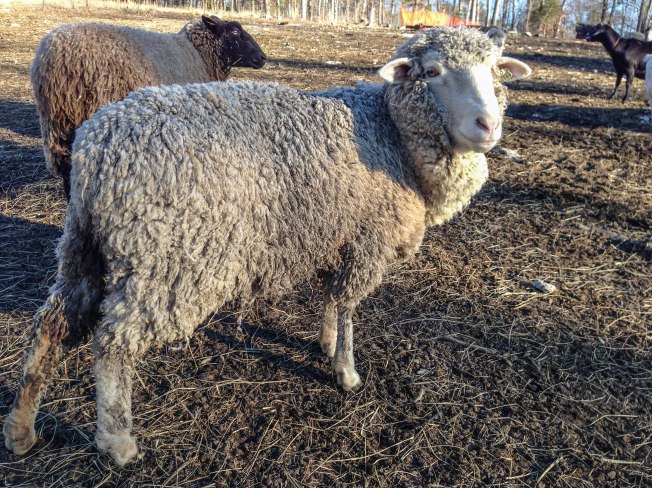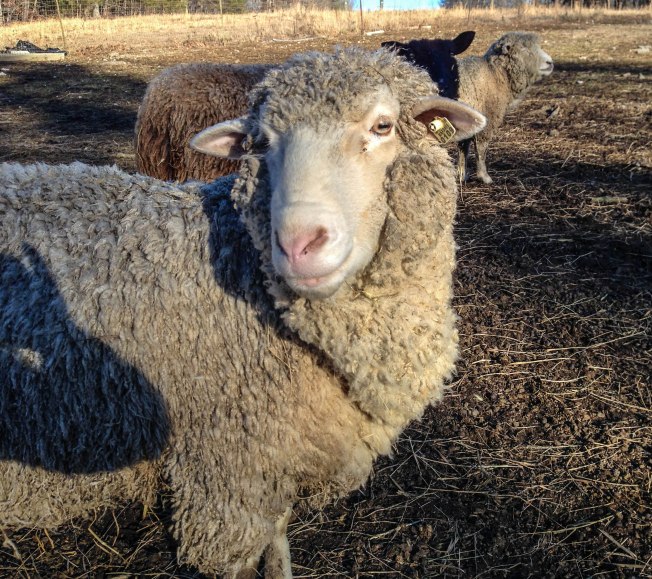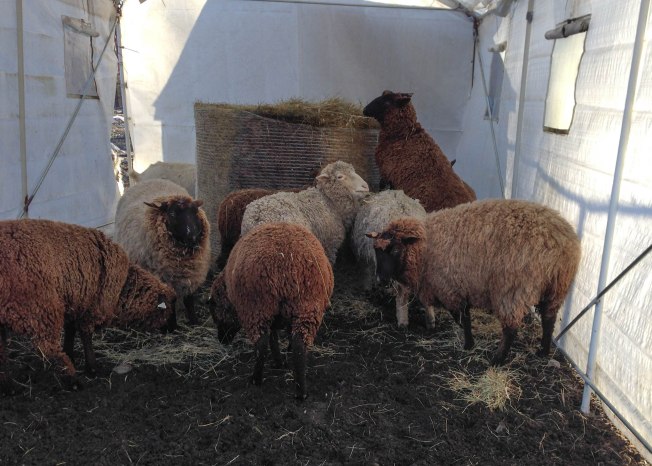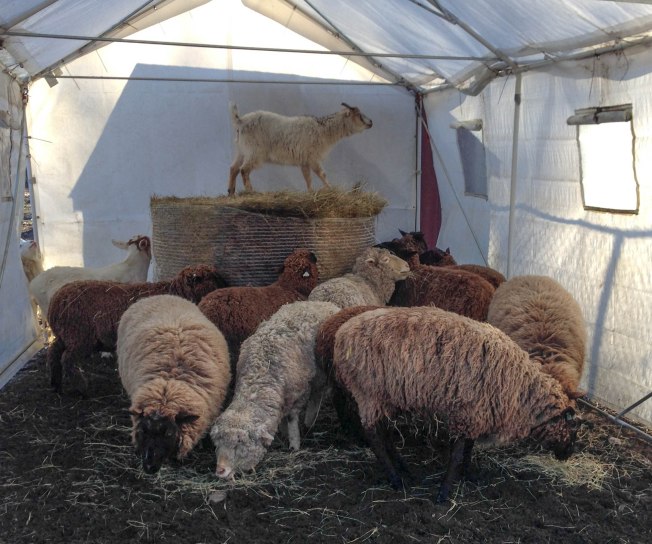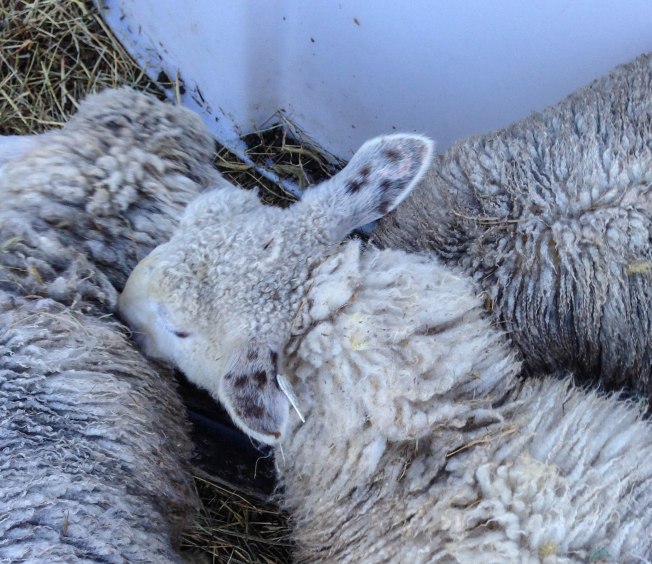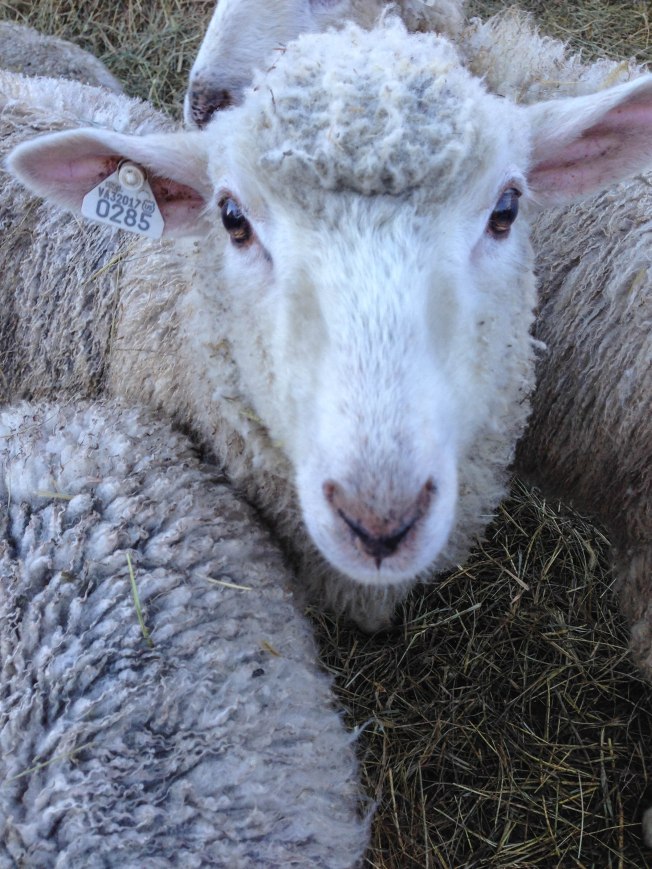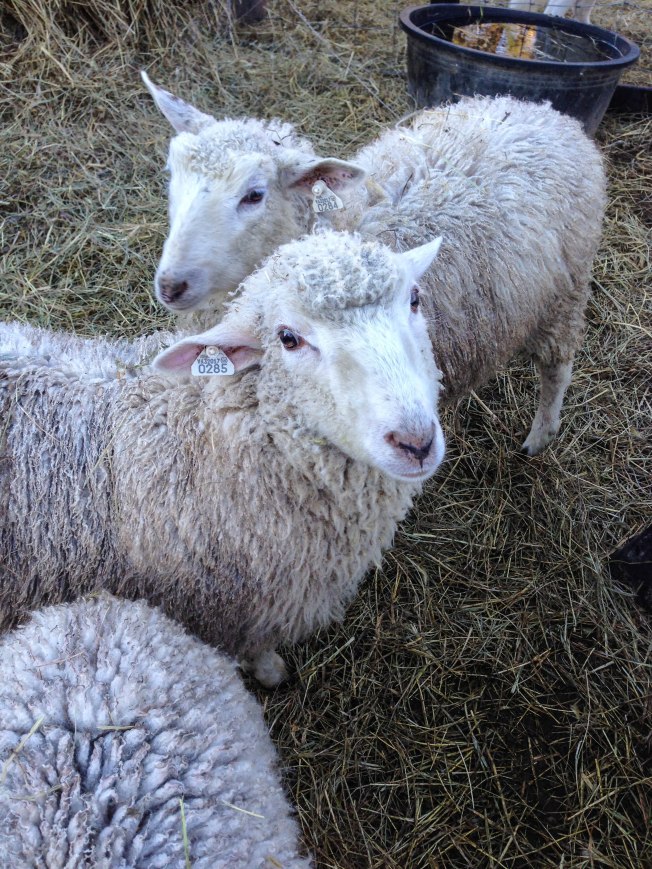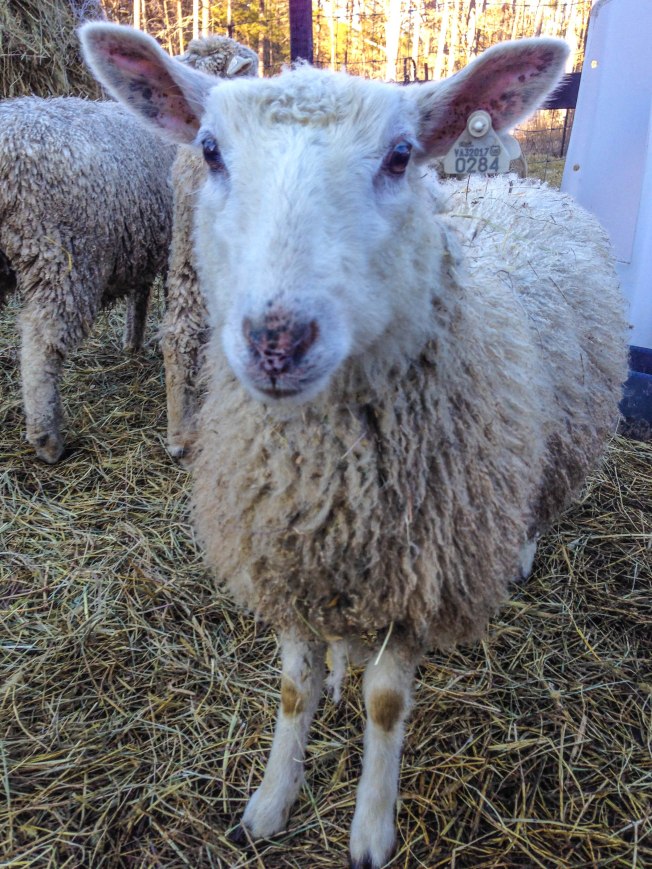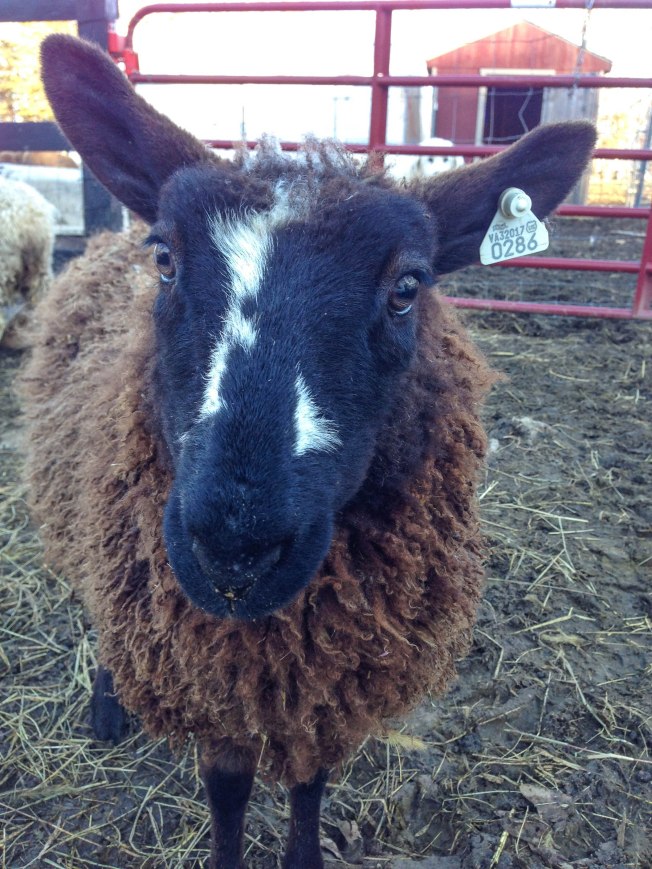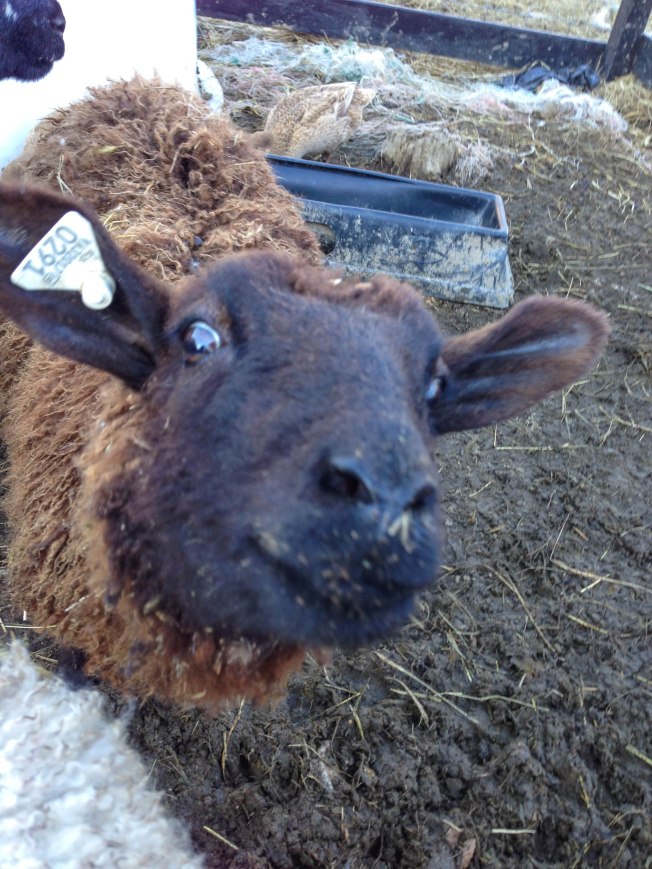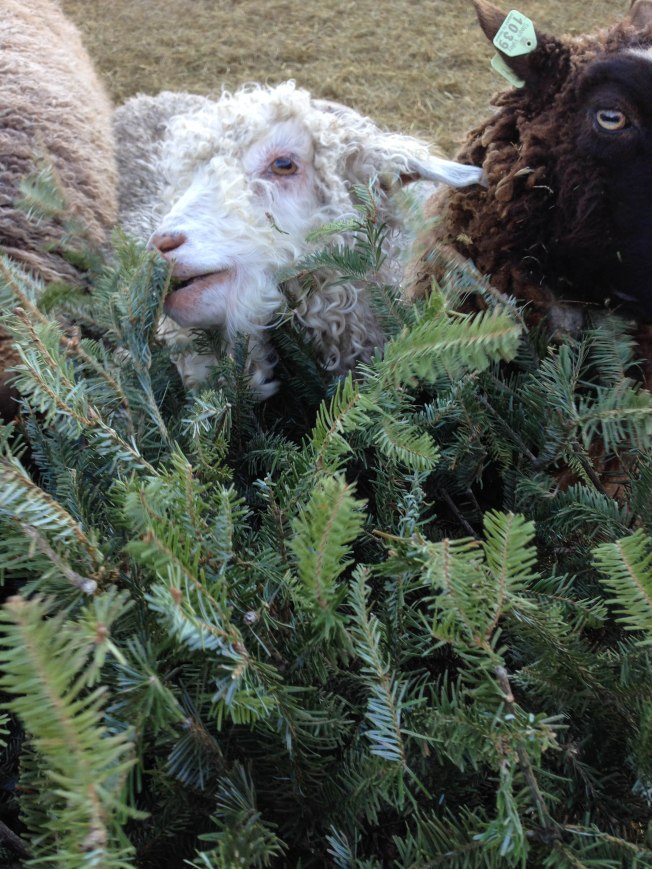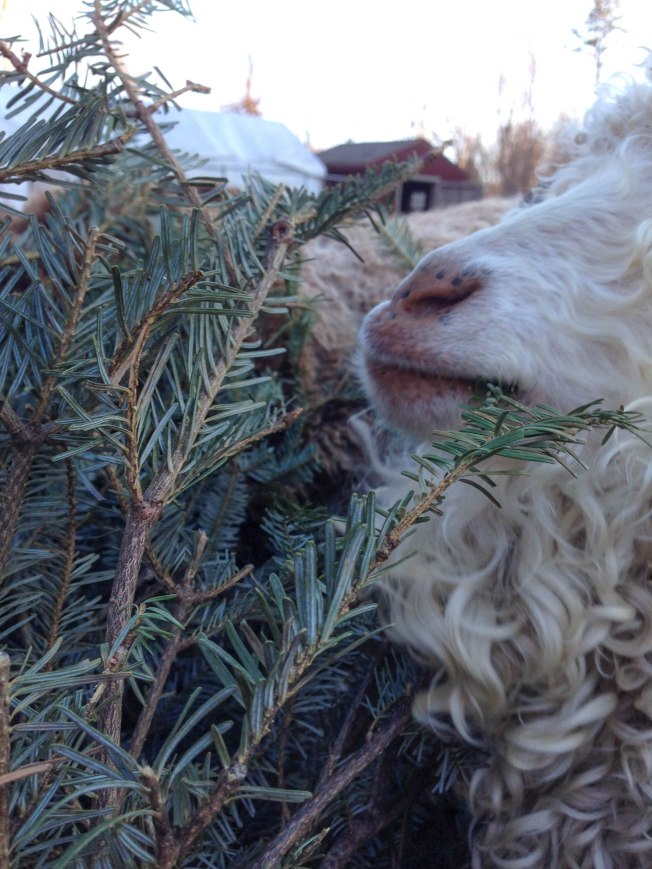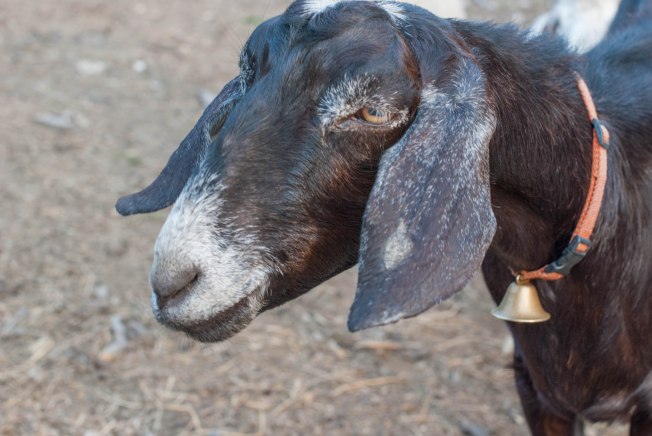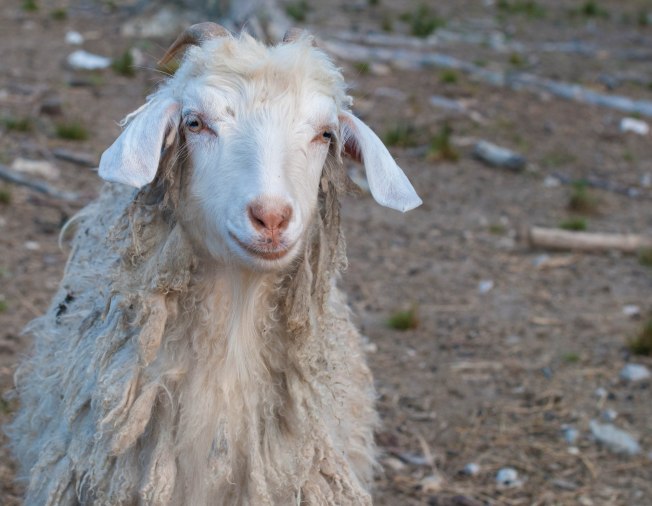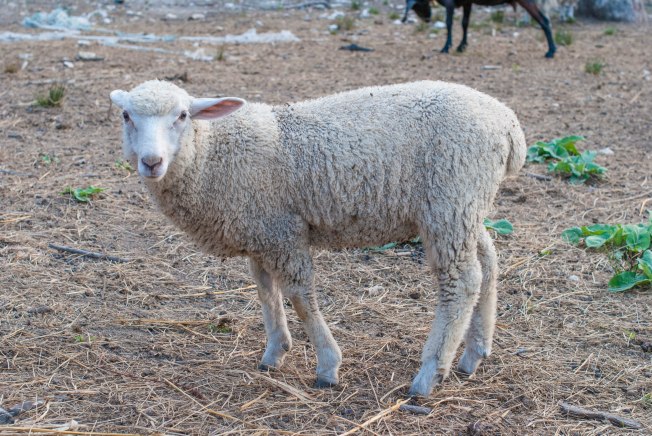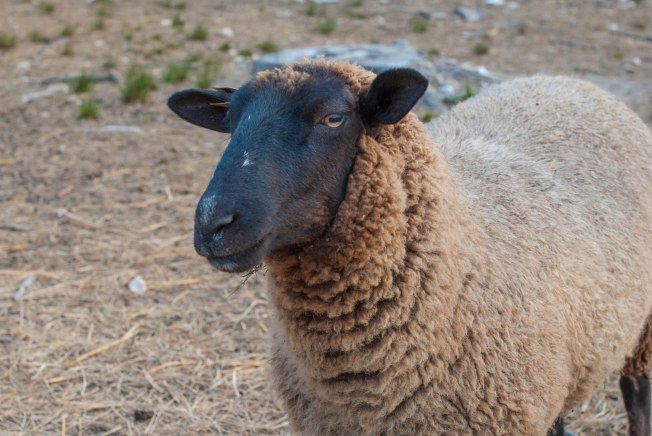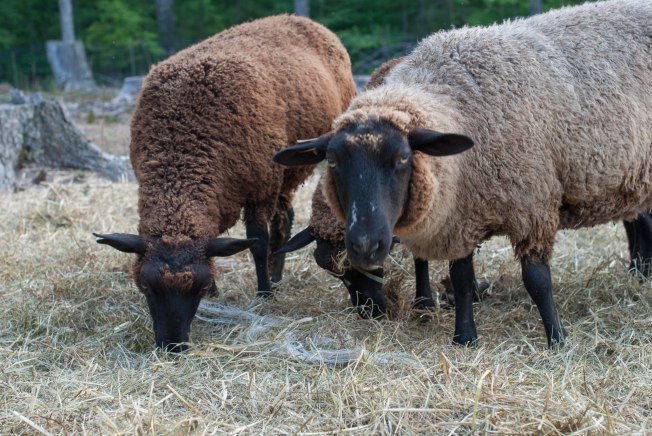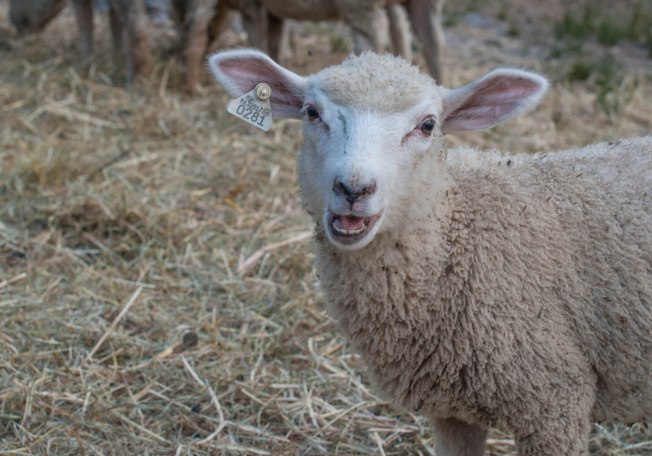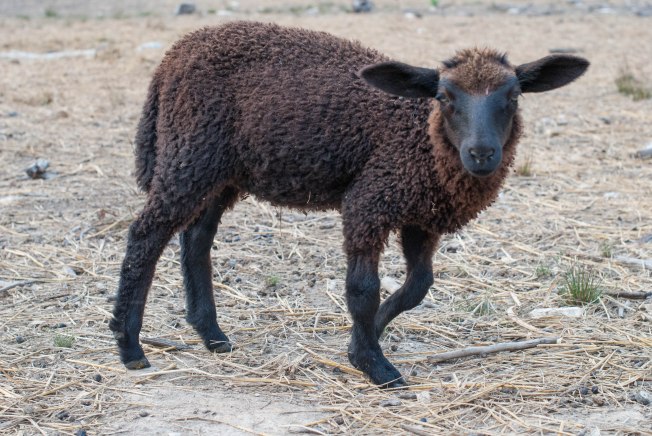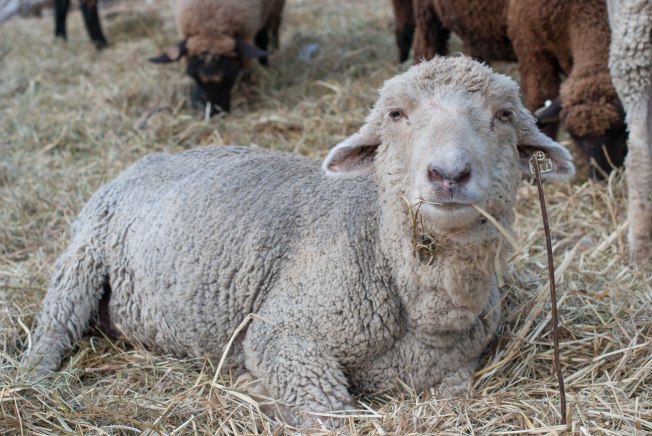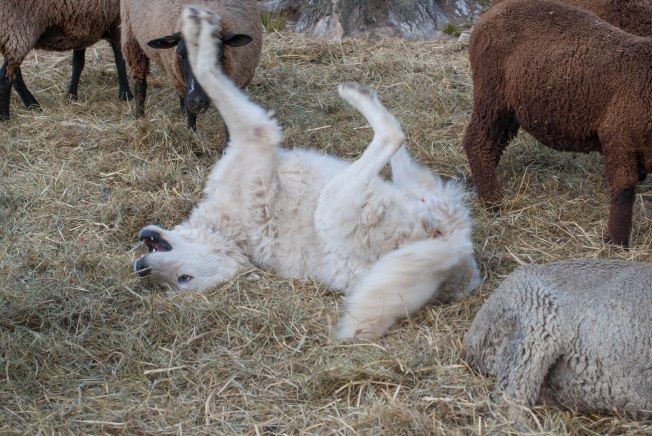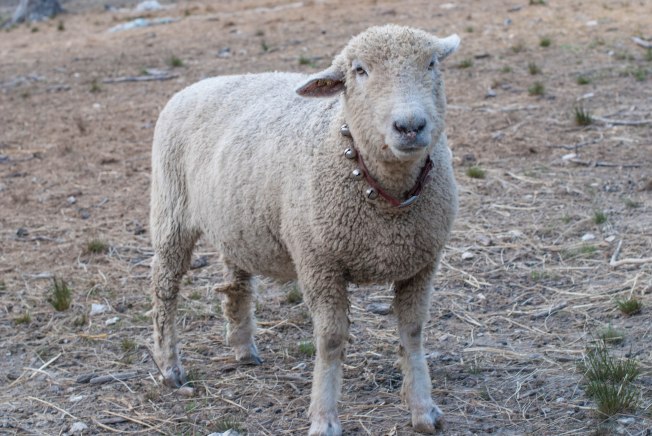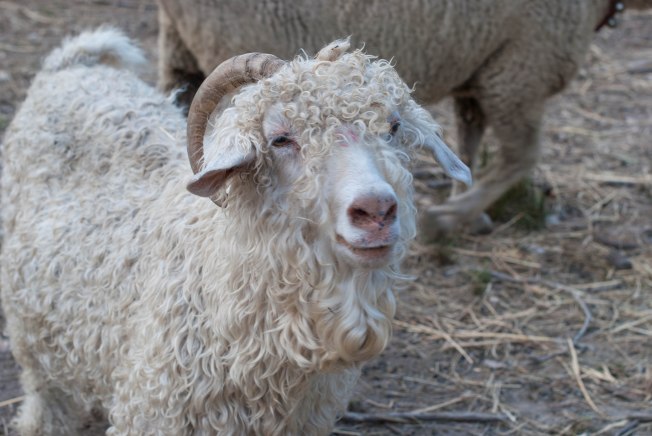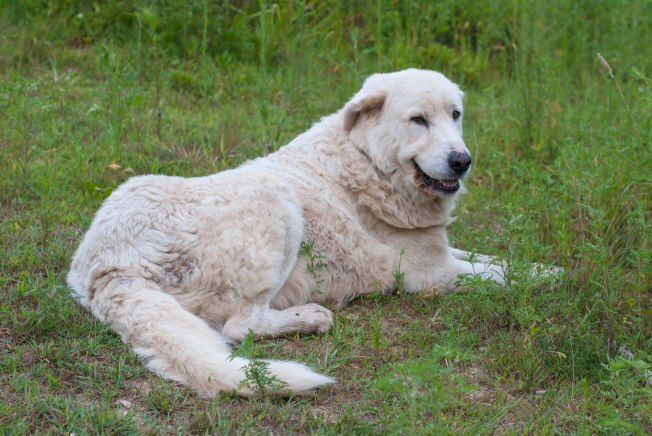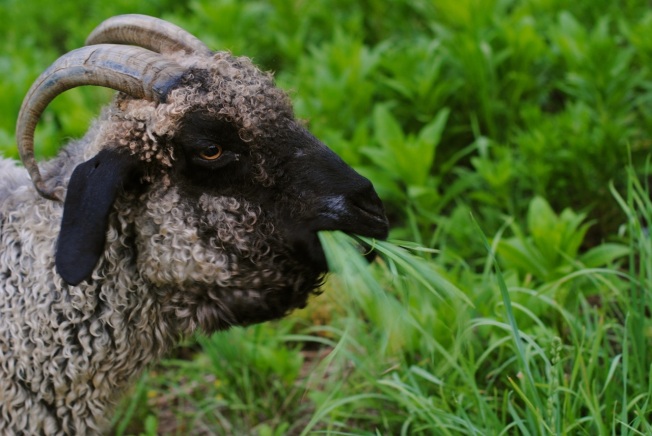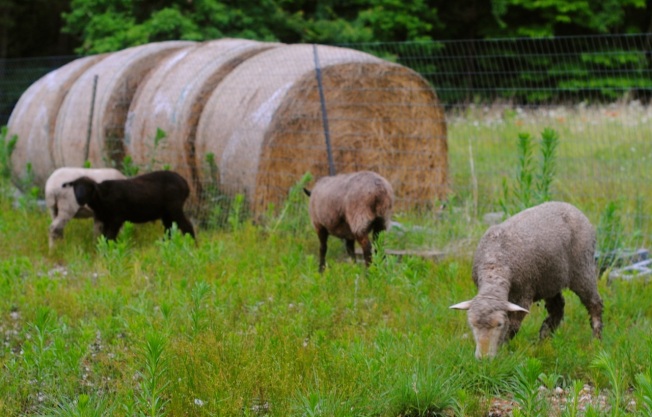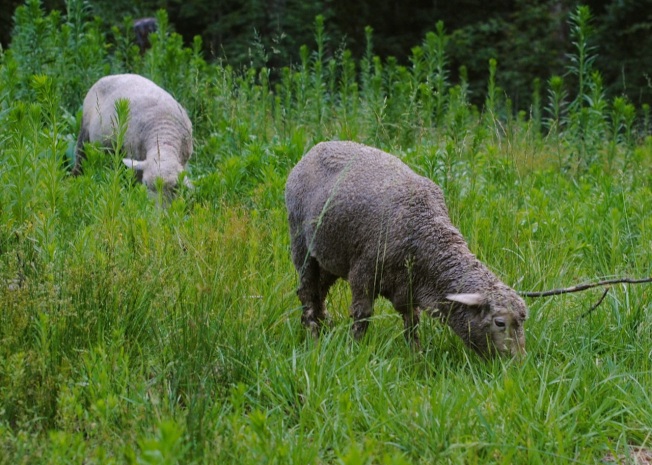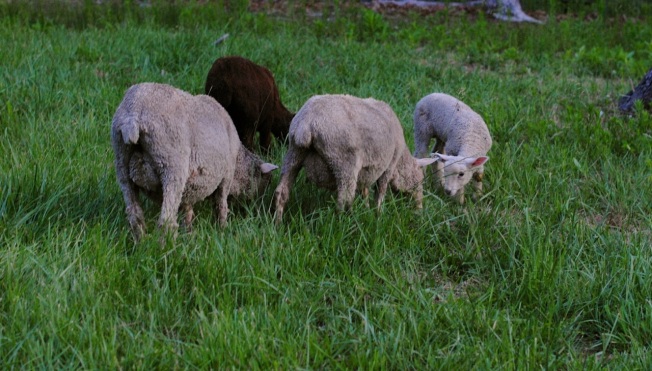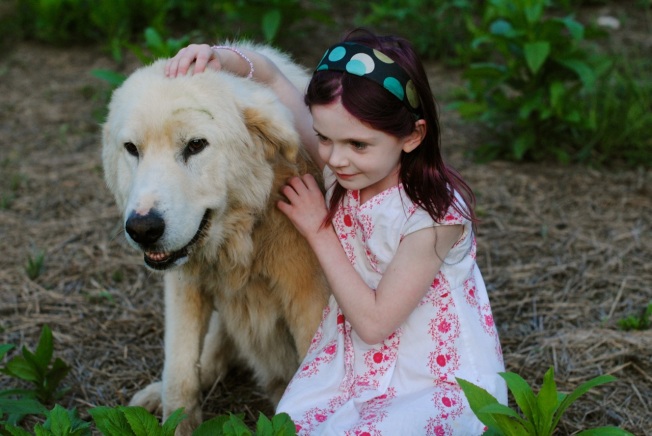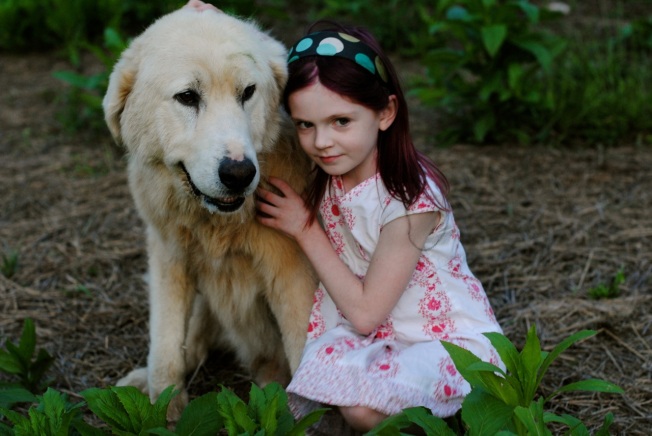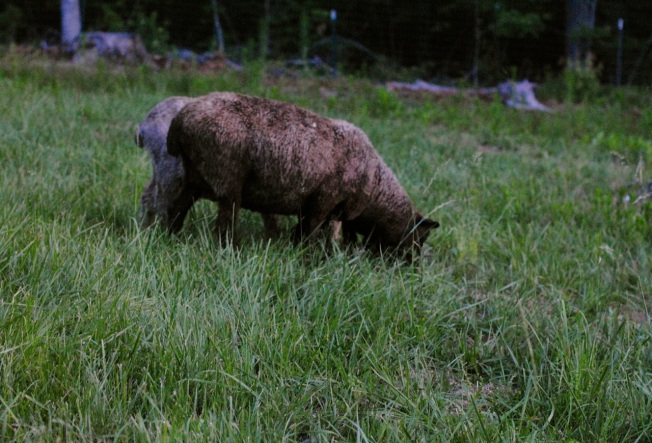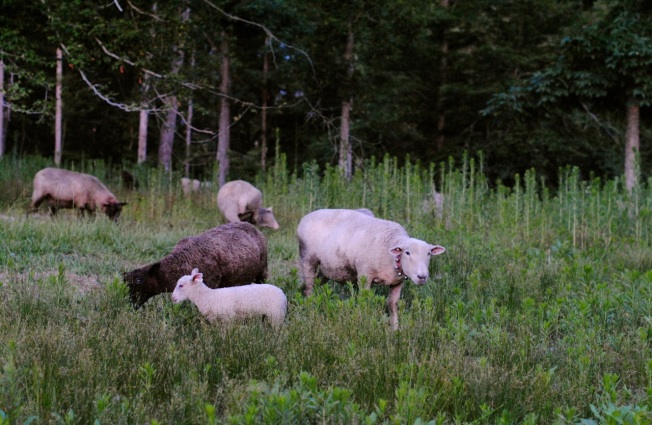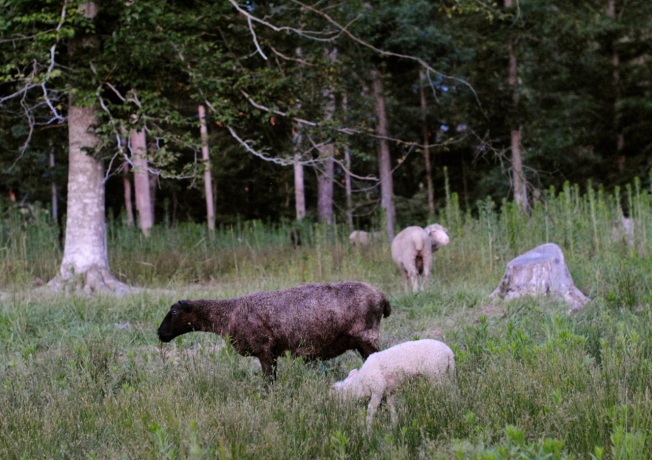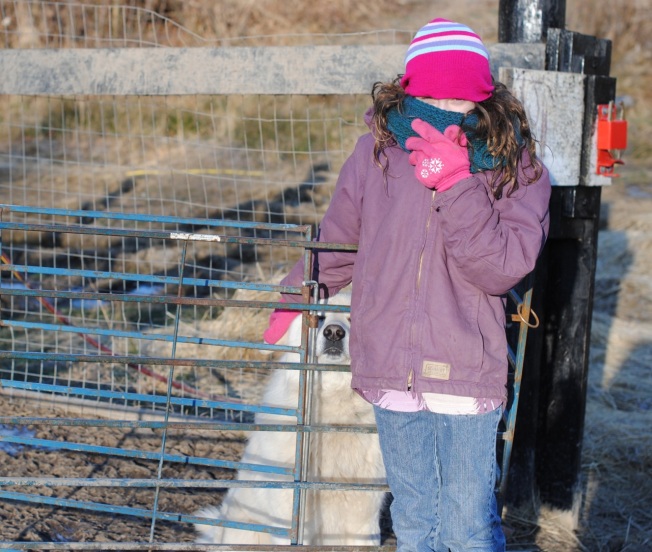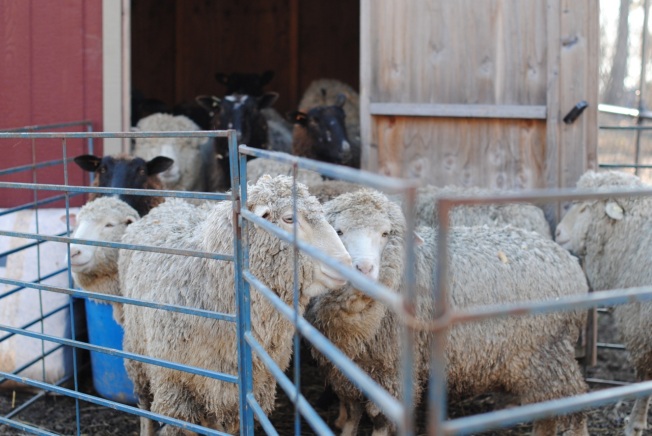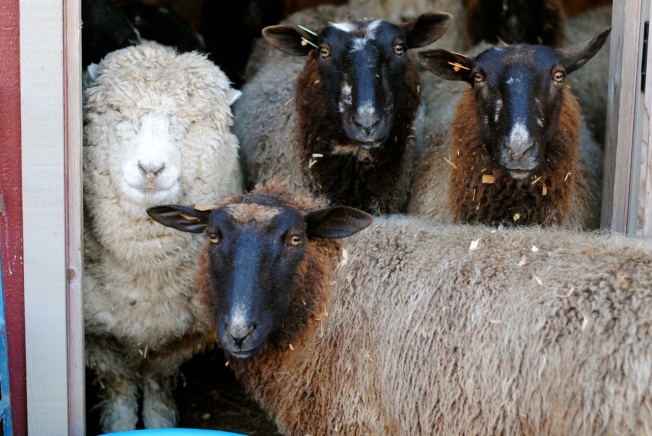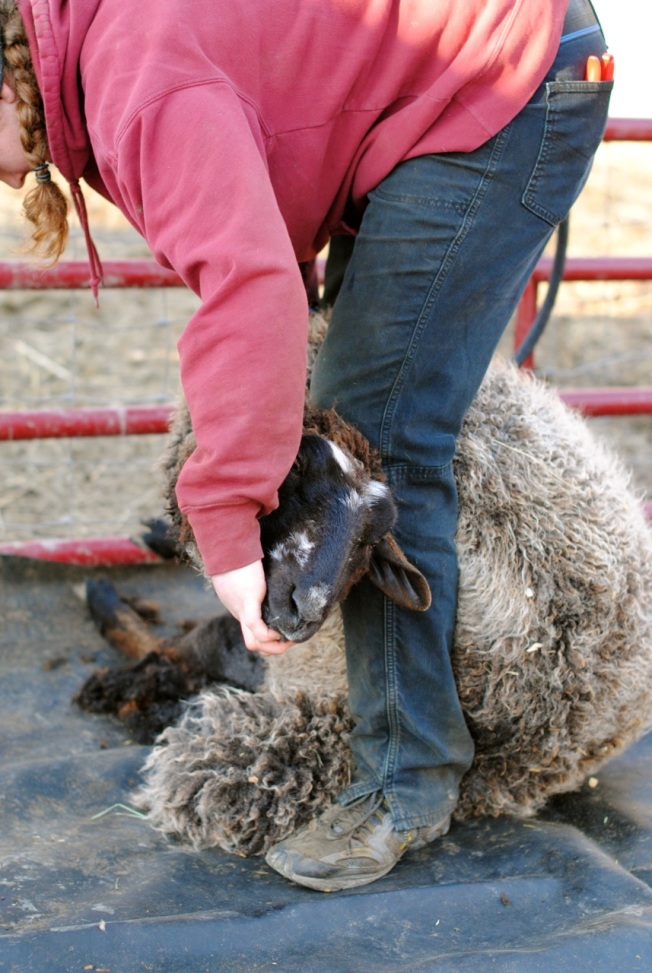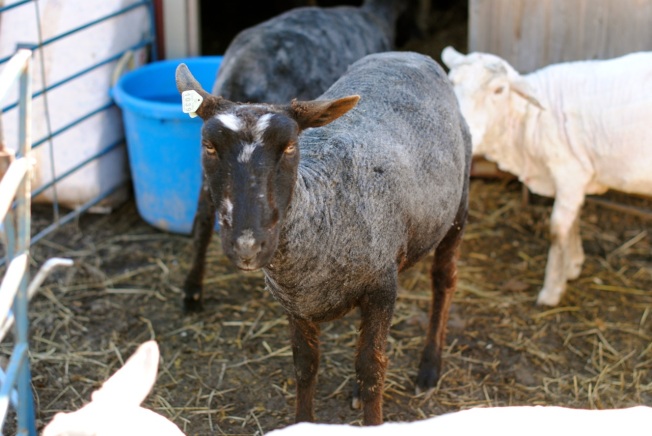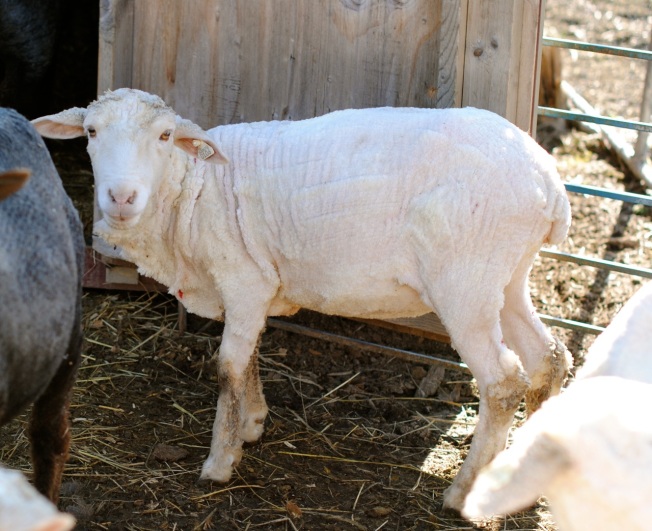We’ve had some spectacularly mild weather here this week! I could get used to low humidity and temps in the mid 80′s. If this was always what summer was like I’d be MUCH more inclined to have it stick around longer.
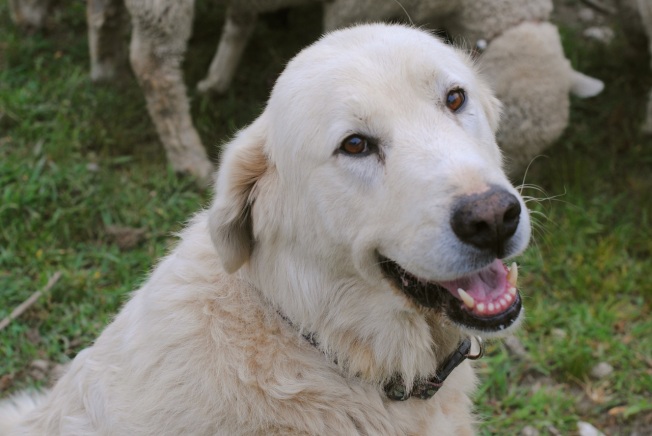
July has been pretty dry, and I’m not one to complain about it. Not after last year’s sogginess! I think it may be helping keep much of the bug populations rather low. The one exception seems to be the flies. They are HORRENDOUS right now. Speaking to our vet this week, she agreed that this has been a terrible year for flies. I’ve been having to spray down the sheeps’ back ends with fly spray every few days, and the vet assured me it was the smart thing to do.
Right now my main objective has been to keep the flock comfortable and well-fed. They have plenty of shade throughout the day, and I have put an extra water tank out as well. They are getting a dose of electrolytes in their water and so far it hasn’t been hot or awful enough out to warrant a heat tonic. (We still have August, though, so…..)
I want them well-fed to give them the best chance against any parasite that may pop up. We did copper them this spring, and they get Levamisole every so often to be safe. We are taking NO chances.
Aside from that, I have had a few opportunities to get to know our new vets. Most recently we had a farm call to take care of a ewe I’d found with a prolapse.
***WARNING - NO PICS, BUT STILL NOT FOR THE SQUEAMISH ***
Sunday evening when Oona and I went out to take care of feeding, I noticed one of the colored sheep has quite a lot of red going on under the tail area. My first thought was flystrike (it’s terrible. Don’t click on that link if you don’t really, really want to know). There were a lot of flies buzzing about and her tail was wagging a lot as though she were itchy.
I dropped everything and ran for my permethrin spray and gloves, prepared to do battle with maggots. But as it turned out, there was no fly infestation. Her vagina had prolapsed and pushed out of her body, and that was what was attracting the flies. As bad as fly strike is, this felt much, much worse.
Thankfully, our vet arrived with confident reassurances, and after an epidural was administered to the bewildered ewe, the whole area was washed well, pushed back up inside where it belonged, and a large stitch was put in place to make sure it stayed put. The bad news is that this ewe cannot be bred again. Ever. Once the vagina or uterus collapses outside of the body like that it has a tendency to want to continue to do so. That stitch that the vet put in her is permanent.
Today I did a thorough check on everyone and she is healing well, and there are no more flies buzzing about her ladybits.
Also doing well is Mr. Paddington. When he and his twin, Piccadilly, were about a week old, we noticed he had a limp. It got progressively worse over the next two or three days and then we discovered a large lump above his front hoof. When we picked him up, it burst. Susan and I were stumped; when a second spot appeared on his back leg and a third on his chest, he went straight to the vet.
She found that his hoof was broken. Most likely his mama stepped on him, or one of the other mamas. When they are that little and trying to nurse, they tend to get underfoot a lot. The broken bones were surrounded by a pocket of infection, which was spreading to other parts of his body.
After lancing and draining his abscesses, she scrubbed him down well, splinted his leg and bandaged him up. I was sent home with instructions to re-bandage every two to three days, administer antibiotics and a painkiller. The kicker, for me, was that the bandage changing and scrubbing of the wounds required him to be asleep, so I was given a vial of sedative to knock him out every few days for a good cleaning.
If you’ve never had to knock out a small animal, it’s rather disconcerting at first!
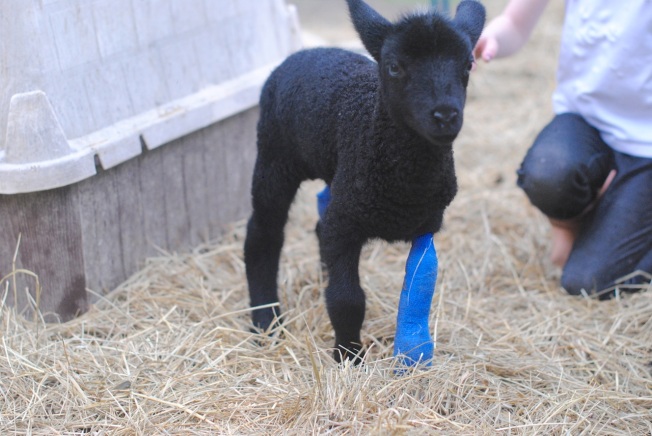
Despite his handicaps, Paddington continued to thrive and nurse and hop along after the other lambs. We have been calling him “Hop-A-Long Paddington” ever since.
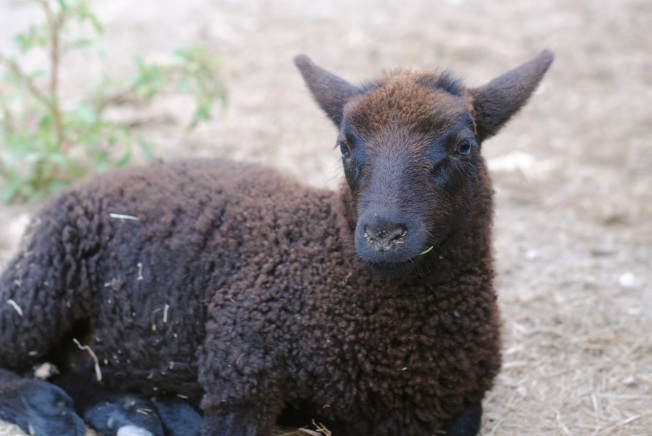
He’s a bit crooked, since his other joints and muscles grew disproportionately in response to how he was using them.
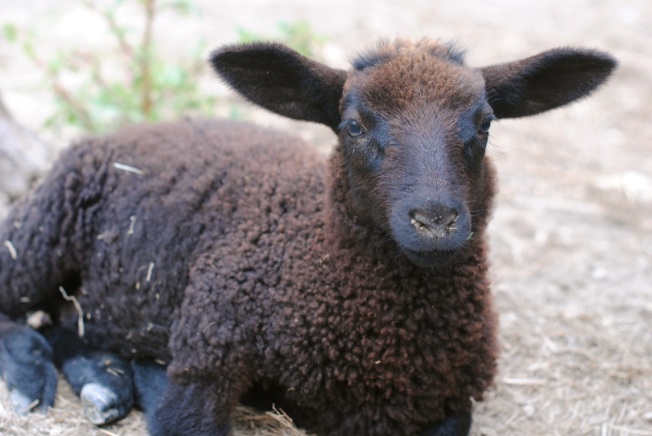
He will win no prizes for conformation. But this lamb by all rights shouldn’t even be alive. It’s a miracle the infection didn’t settle into his bones. It’s amazing that he never stopped nursing from his mama, despite the fact that she was not the most attentive parent. He is the friendliest lamb in the field, owing to the time he spent being handled by us, and even though he’s crooked, he is growing just as well as the other lambs.
And if we are all very, very lucky, there will be no more vet calls this year!

